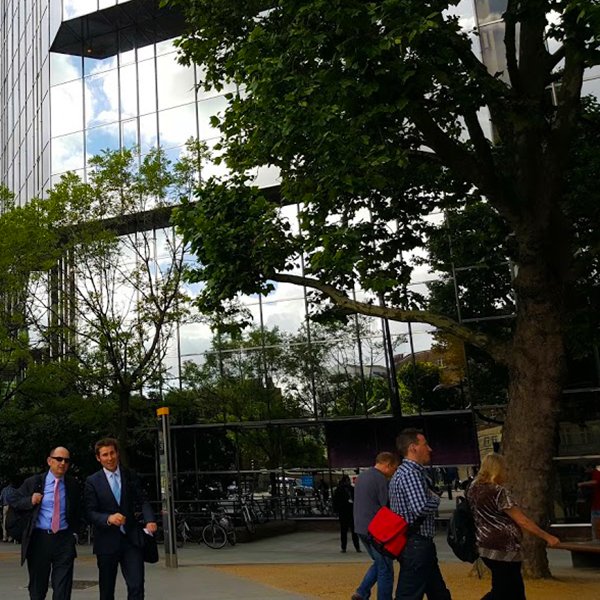Switchgear plays a critical role in managing and protecting electrical systems, acting as a backbone for ensuring safe and efficient power distribution. Comprising various components such as circuit breakers, fuses, and switches, switchgear is designed to control the flow of electricity, isolate electrical equipment, and prevent overloads or short circuits. By swiftly disconnecting faulty sections when an anomaly is detected, switchgear not only safeguards electrical equipment but also minimizes downtime, thus enhancing the overall reliability of the electrical network. Understanding how switchgear functions within these systems is essential for anyone involved in the design, operation, or maintenance of electrical infrastructures.

Types of Switchgear
Switchgear is categorized into different types, largely based on voltage levels and specific applications. Low voltage (LV) switchgear operates at voltages up to 1,000 volts. It is commonly used in residential and commercial buildings to distribute electrical power safely and efficiently. LV switchgear units are designed to rapidly interrupt fault currents and provide circuit protection through devices like MCCBs (Molded Case Circuit Breakers) and MCBs (Miniature Circuit Breakers).
Medium voltage (MV) switchgear typically handles voltages in the range of 1,000 to 36,000 volts. It is crucial in industrial settings and utility environments for managing electrical distribution and ensuring system reliability. This type of switchgear often employs vacuum or gas-insulated circuit breakers, which effectively extinguish arcs and allow for quick interruption of fault currents. MV switchgear is frequently used in substations and forms a key component of the infrastructure necessary for modern electricity grids.
High voltage (HV) switchgear operates above 36,000 volts and is essential for large-scale power transmission over long distances. These systems utilize circuit breakers capable of withstanding and interrupting large arcing currents safely. Gas-insulated switchgear (GIS) is often employed at these high voltage levels due to its compact and efficient design, which provides enhanced safety in controlling electricity flow across power grids.
The evolution of HV switchgear has been pivotal in the expansion of secure and reliable power networks globally. From arc resistant switchgear to hybrid switchgear, manufacturers are continuously developing new solutions to meet the demands of evolving electrical systems. It is important to understand the specific type of switchgear being used in a particular system, as different voltages and applications require specialized equipment for optimal performance.
Components of Switchgear
Switchgear comprises several integral components, each serving a distinct function in the safe operation of electrical systems. Circuit breakers are one of the primary constituents, responsible for automatically interrupting power flow to prevent circuit damage during faults. They play a vital role in maintaining electrical safety and can be reset after the issue is resolved, unlike fuses which need replacement. Switchgear also includes disconnect switches, which are manually operated to safely isolate equipment for maintenance or emergencies. This can be crucial for ensuring that repair personnel are not exposed to live circuits during interventions.
Fuses, another component of switchgear, are critical for protecting against excess current. In the event of an overload, a fuse will blow or melt, creating an open circuit and halting the power supply. This immediate action prevents potential equipment damage or fire hazards. Fuses need to be replaced once they have blown, but their simplicity and reliability make them a favored choice in many applications. Additionally, protective relays are incorporated within switchgear. These devices continuously monitor electrical circuits, making real-time decisions to trigger circuit breakers when they detect abnormalities, ensuring precise and timely responses to prevent accidents.
Functions of Switchgear in the Electrical Grid
Switchgear plays an indispensable role in the functionality and safety of electrical grids. One of its primary functions is fault isolation. When an anomaly, such as a short circuit, occurs within the grid, switchgear components swiftly act to isolate the affected section, preventing the problem from escalating and causing widespread outages. This capacity to quickly disconnect faulty parts ensures that the majority of the grid remains in operation, minimizing disruptions and maintaining reliability for consumers.
Another key function of switchgear is power control. By regulating the direction and distribution of electrical flow, switchgear enables the efficient management of energy resources across various sectors. This includes channeling power in response to changing demands, optimizing energy use, and controlling the integration of alternative energy sources such as solar and wind power into the existing grid. Such dynamic power control is vital for both economic efficiency and environmental sustainability.
Advantages of Implementing Switchgear Systems
Implementing switchgear systems in electrical networks brings several notable advantages. One such benefit is improved safety. The ability of switchgear to quickly disconnect faulty sections minimizes the risk of fire and electrical hazards, ensuring a safe working environment for personnel. This proactive fault management reduces the likelihood of accidents, protecting both human life and valuable assets.
Reliability is another major advantage of switchgear systems. By providing robust protection against overloads and faults, switchgear enhances the stability and uptime of electrical networks. This reliability is critical for industries and businesses that depend on continuous power supply for their operations. Downtime due to electrical faults can lead to significant financial losses, which switchgear helps to mitigate by ensuring prompt resolution of issues.
Challenges in Switchgear Design and Maintenance
Designing and maintaining switchgear systems involves addressing various challenges to ensure optimal performance. One key challenge is managing the heat produced by electrical components. Overheating can shorten the lifespan of switchgear and pose safety risks. Effective thermal management strategies and materials must be incorporated to keep temperatures within acceptable limits, preventing insulation and equipment degradation.
Another significant challenge is ensuring switchgear compatibility with new technologies and energy sources. As electrical systems evolve, switchgear must be capable of accommodating higher voltages, faster response times, and integration with digital monitoring systems. Adapting to these technological advancements requires innovative design approaches and the continual updating of switchgear capabilities to meet future demands.
Future Trends and Innovations in Switchgear Technology
The future of switchgear technology is marked by several exciting trends and innovations aimed at enhancing performance and sustainability. One such trend is the increasing adoption of digital and smart switchgear systems. These systems leverage advanced sensors and monitoring software to provide real-time data on power usage and equipment status. Such capabilities enable predictive maintenance and improve overall grid intelligence, ensuring more efficient operations.
Another innovation driving the future of switchgear is the development of eco-friendly alternatives to traditional insulating gases like SF6. SF6, while effective, is a potent greenhouse gas. Efforts are underway to find sustainable replacements that offer similar insulation properties without the environmental impact. These eco-friendly solutions are vital for decreasing the carbon footprint of electrical infrastructure and aligning with global environmental goals.

Switchgear technology continues to evolve, driven by the need for safer and more reliable power distribution systems. As our dependence on electricity grows, so does the importance of effective switchgear in maintaining a stable and sustainable energy supply. By understanding its various types, components, functions, and future developments, we can appreciate the critical role that switchgear plays in powering our world.

Founder Dinis Guarda
IntelligentHQ Your New Business Network.
IntelligentHQ is a Business network and an expert source for finance, capital markets and intelligence for thousands of global business professionals, startups, and companies.
We exist at the point of intersection between technology, social media, finance and innovation.
IntelligentHQ leverages innovation and scale of social digital technology, analytics, news, and distribution to create an unparalleled, full digital medium and social business networks spectrum.
IntelligentHQ is working hard, to become a trusted, and indispensable source of business news and analytics, within financial services and its associated supply chains and ecosystems



























